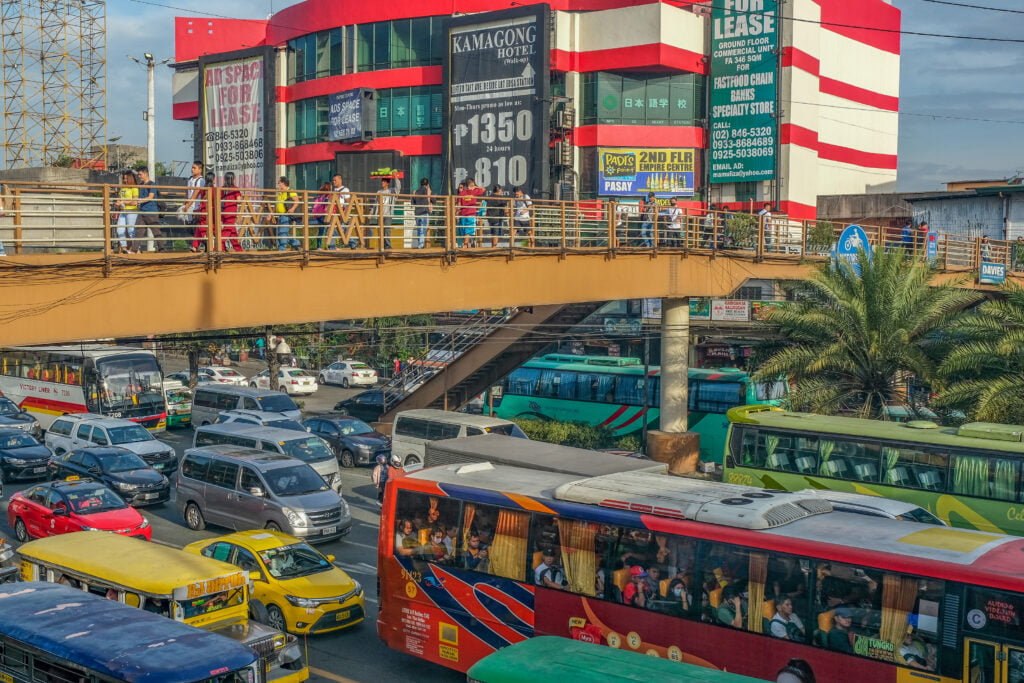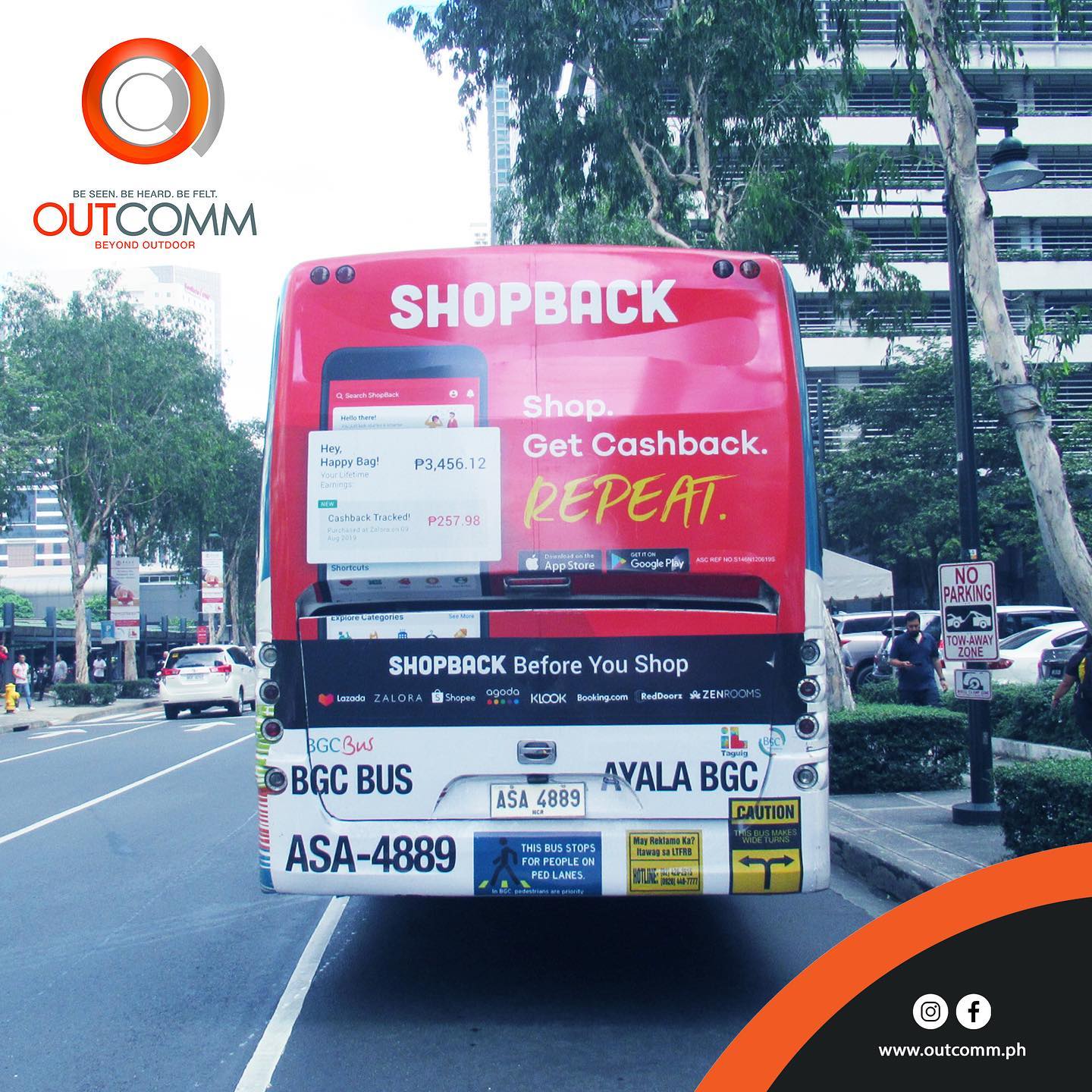Transit Advertising Philippines: An Innovative Method to Market
Transit Advertising Philippines: An Innovative Method to Market
Blog Article
Understanding the Duty of Transit Advertising in Enhancing Brand Exposure and Customer Involvement
Transit marketing has actually emerged as a pivotal component in the advertising landscape, using special chances for brands to boost their presence and engage customers properly. With the capacity to reach a varied and restricted audience during their daily commutes, these advertising approaches are not simply concerning exposure; they are regarding developing meaningful links with possible customers. As we discover the complex benefits and ingenious strategies within transportation advertising, it becomes necessary to take into consideration just how these aspects collectively affect consumer understanding and actions, raising inquiries regarding their long-term effect on brand commitment.
Definition of Transit Marketing
Transit advertising refers to the method of advertising items, services, or brand names via advertisements positioned around public transport systems. This type of marketing encompasses a range of placements, including posters on trains and buses, electronic displays at transportation stations, and covers on the outside of vehicles. It aims to reach a varied target market, maximizing the high foot traffic linked with public transportation.
Transit advertising and marketing is strategically positioned to catch the attention of commuters, who typically spend considerable time waiting or taking a trip. By integrating promotions into the daily routines of people, brand names can develop a long-term impression and foster brand name acknowledgment. The tool is especially reliable in urban atmospheres, where public transport is a primary setting of travel.
In addition, transit advertising and marketing can help with localized targeting, allowing services to reach details demographics based upon transit paths and terminal locations. As city populaces expand and the use of public transport boosts, this marketing approach has actually gotten importance as a crucial element of incorporated advertising approaches. The dynamic nature of transportation advertising, combined with its capacity to engage consumers in a restricted atmosphere, highlights its importance in modern marketing techniques.
Benefits of Transit Advertising And Marketing
The efficiency of transit marketing exists in its capability to supply a multitude of benefits to brand names looking for to enhance visibility and involvement. Among the main advantages is the substantial reach it uses; transportation ads can effectively target varied demographics across city areas, reaching both commuters and pedestrians alike. This broad exposure substantially enhances brand recognition.
One more benefit is the high regularity of impressions. As transportation vehicles travel along established paths and stop at numerous places, they create repeated exposure that strengthens brand name messages. This frequency promotes familiarity, which is critical in consumer decision-making.
Transportation advertising is likewise cost-effective contrasted to various other media systems. Offered its large reach and capacity for high perceptions, brands commonly experience a lower expense per thousand perceptions (CPM), maximizing their advertising budget plan.
Moreover, transit advertisements can develop a feeling of area connection. By straightening with regional transportation systems, brands can resonate with local target markets and promote a feeling of regional pride. This local approach improves brand commitment and engagement, making transportation advertising and marketing a compelling choice for services intending to solidify their visibility out there.

Effective Techniques for Transportation Projects
To maximize the effect of transit campaigns, brand names ought to utilize calculated preparation and execution tailored to their target audience. First, identifying the demographic attributes of the audience using public transit is vital. This enables brands to develop customized messaging that resonates with possible clients.
Following, picking the right transit mediums is vital. Whether using bus covers, train posters, or digital screens, each medium has distinct benefits that can improve exposure. For example, vivid visuals on bus wraps can draw in interest, while digital advertisements can be upgraded often to reflect prompt promotions.
Additionally, integrating a cohesive branding strategy throughout transportation platforms guarantees consistency and strengthens the brand's identity. Making use of unforgettable taglines and appealing designs will certainly enhance brand name recall among commuters.
By utilizing these techniques, brands can successfully harness the potential of transit marketing, cultivating higher recognition and connection with their target audience. Inevitably, a well-executed transportation project can drive substantial growth in brand visibility and consumer engagement.

Determining Impact and Engagement
In evaluating the efficiency of transit marketing campaign, precise dimension of impact and engagement is important for brands seeking to maximize their advertising approaches. Metrics such as reach, frequency, and impacts offer fundamental data to evaluate visibility. Analyzing these elements Full Article assists figure out the number of potential clients are subjected to the advertisements during their day-to-day commutes.
Engagement can be more gauged via customer interactions, such as site web traffic, social media sites points out, and straight actions to calls-to-action included in the advertisements. Using tools like QR codes or unique Links can facilitate monitoring of customer actions directly connected to transportation projects. Surveys and feedback devices likewise function as valuable techniques to gather qualitative data on consumer understandings and recall of the ad.
Additionally, advanced analytics and acknowledgment models can associate transit exposure with subsequent getting actions, using understandings right into the return on investment. By using a thorough technique that combines measurable and qualitative procedures, brands can develop a nuanced understanding of their transit marketing effect. Inevitably, this data-driven strategy allows brands to fine-tune their campaigns, ensuring they resonate effectively with target audiences and enhance total brand name visibility.
Situation Researches of Effective Campaigns
Effective transit marketing campaign act as engaging instances of how reliable methods can raise brand presence and involvement. Transit Advertising Philippines. One significant instance is the "I Love New york city" campaign, which changed the city's picture and brought in countless vacationers. By utilizing train ads, signboards, and bus covers, the project developed a strong, cohesive brand name identity, resulting in a significant uptick in tourism and neighborhood service patronage
Another exemplary campaign is Coca-Cola's "Share a Coke" effort, which leveraged transportation marketing to personalize the brand experience. By including popular names on marketing materials throughout various transportation systems, Coca-Cola promoted a deeper emotional link with consumers, encouraging them to share more info here their experiences on social media.
Furthermore, the "Got Milk?" campaign efficiently utilized mass transit ads to reach a broad audience, strengthening the message of the value of milk in a well balanced diet. The campaign saw a measurable rise in milk consumption in target demographics.
These instance research studies illustrate that when his response performed thoughtfully, transportation marketing can substantially boost brand exposure, foster consumer engagement, and drive measurable outcomes, showing its crucial role in modern-day advertising methods. - Transit Advertising Philippines
Final Thought
In conclusion, transportation advertising and marketing offers as an important device for improving brand name exposure and promoting consumer interaction. Ultimately, the capability to determine engagement and examine successful situation studies underscores the effectiveness of transportation advertising and marketing in driving brand loyalty and customer communications.
Transit advertising has arised as an essential aspect in the advertising and marketing landscape, supplying one-of-a-kind opportunities for brands to elevate their exposure and engage customers effectively.In addition, transportation advertising and marketing can assist in localized targeting, allowing services to reach details demographics based on transit courses and station locations.In assessing the effectiveness of transit advertising and marketing projects, precise dimension of effect and interaction is essential for brand names seeking to enhance their advertising approaches.Successful transit advertising and marketing campaigns offer as compelling instances of exactly how reliable methods can elevate brand exposure and engagement.In final thought, transit marketing offers as a crucial device for boosting brand presence and fostering customer interaction.
Report this page